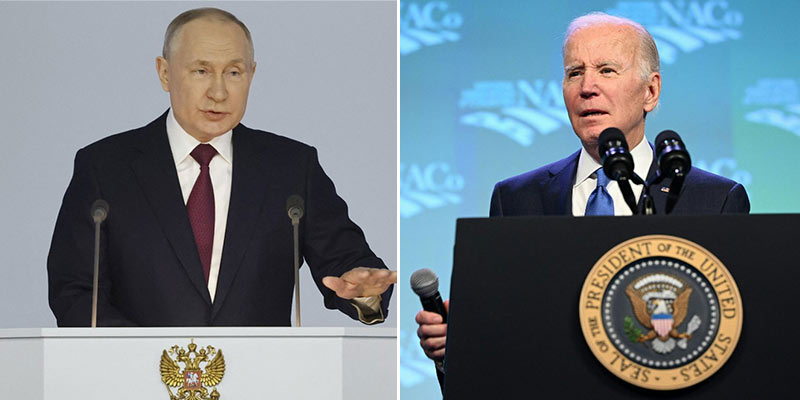- World
- Feb 22
Putin suspends New START treaty with the US
Russian President Vladimir Putin declared that Moscow was suspending its participation in the New START treaty, the last remaining nuclear arms control pact with the United States, sharply upping the ante amid tensions with Washington over the fighting in Ukraine.
In his state-of-the-nation address to the Russian people, Putin said Russia was withdrawing from the treaty because of US support to Ukraine, and he accused the US and its NATO allies of openly working for Russia’s destruction.
What is the New START treaty?
• The New START treaty is formally known as the ‘Treaty between the United States of America and the Russian Federation on Measures for the Further Reduction and Limitation of Strategic Offensive Arms’.
• It was signed by Russia and the US and entered into force on February 5, 2011 as a 10-year agreement.
• In 2021, both sides agreed on a five-year extension of New START to keep it in force through February 4, 2026. The treaty includes a withdrawal clause that is standard in arms control agreements.
• New START replaced the 1991 START I treaty (Strategic Arms Reduction Treaty), which expired in December 2009, and superseded the 2002 Strategic Offensive Reductions Treaty (SORT), which terminated when New START came into force.
• It is the last major pact of its kind between Russia and the US after Washington pulled out of a separate nuclear arms control agreement with Russia, the Intermediate-Range Nuclear Forces Treaty (INF), under the Trump administration in 2019.
• The New START treaty obligated both Russia and the US to commit to regular communications on the status of their nuclear arsenals, allow regular on-site inspections and abide by caps on the number of deployed and non-deployed warheads each would maintain.
• Under the treaty, the US and Russian had seven years to meet the treaty’s central limits on strategic offensive arms (by February 5, 2018) and are then obligated to maintain those limits for as long as the treaty remains in force. Both sides met the central limits of the New START treaty by February 5, 2018, and have stayed at or below them ever since.
Those limits are:
i) 700 deployed intercontinental ballistic missiles (ICBMs), deployed submarine-launched ballistic missiles (SLBMs), and deployed heavy bombers equipped for nuclear armaments.
ii) 1,550 nuclear warheads on deployed ICBMs, deployed SLBMs, and deployed heavy bombers equipped for nuclear armaments (each such heavy bomber is counted as one warhead toward this limit).
iii) 800 deployed and non-deployed ICBM launchers, SLBM launchers, and heavy bombers equipped for nuclear armaments.
• The information provided through the treaty’s implementation contributes to reducing the risk of strategic surprise, mistrust, and miscalculations that can result from excessive secrecy or decisions based on worst-case assumptions.
Since the New START Treaty’s entry into force, the two parties have conducted:
i) 328 on-site inspections.
ii) 25,311 notifications exchanged.
iii) 19 meetings of the Bilateral Consultative Commission.
iv) 42 biannual data exchanges on strategic offensive arms subject to the treaty.
• The New START Treaty provides for 18 on-site inspections per year. There are two basic types of inspections. Type One inspections focus on sites with deployed and non-deployed strategic systems. Type Two inspections focus on sites with only non-deployed strategic systems.
Manorama Yearbook app is now available on Google Play Store and iOS App Store

